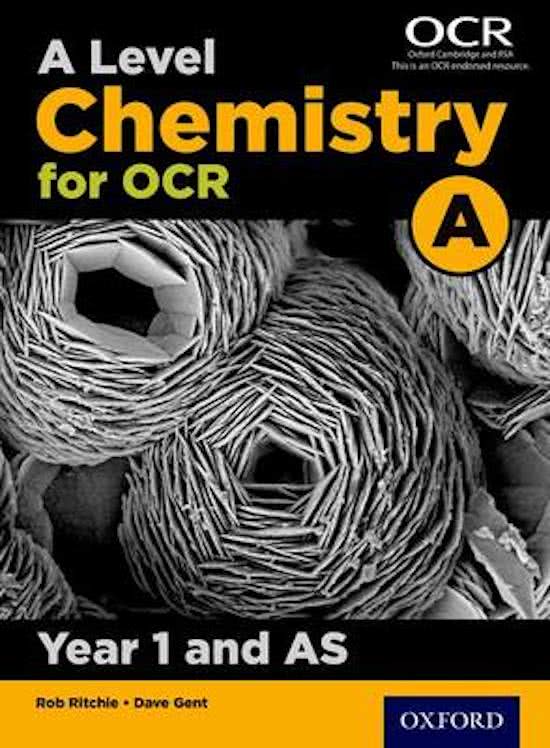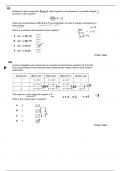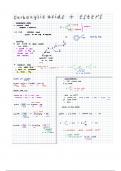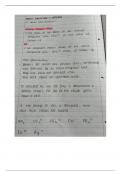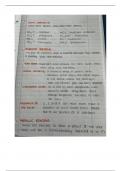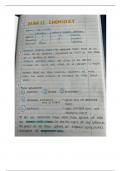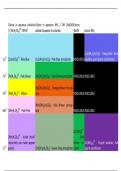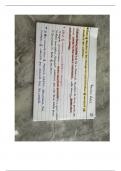OCR • Chemistry A
Latest uploads for Chemistry A at OCR. Looking for Chemistry A notes at OCR? We have lots of notes, study guides and revision notes available for Chemistry A at OCR.
-
469
-
20
-
69
Modules Chemistry A at OCR
Notes available for the following courses of Chemistry A at OCR
- A Level Chemistry 2
- A* Level - All of Chemistry H432 1
- A2 Unit F324 - Rings, Polymers and Analysis PSYc101 22
- A2 Unit F325 - Equilibria, Energetics and Elements H434 31
- A2 Unit F326 - Practical Skills in Chemistry 12
- Acids and Redox 3
- Acids, Bases and pH 1
- Advanced Energetics 1
- Alcohols, Organic Chemistry 1
- Alkanes, Organic Chemistry 1
- Alkenes, Organic Chemistry 1
- ALL 2
- All modules 4
- All Past Papers 1
- Amines 2
- Amines, Amides and Amino acids 1
- Amount of Substance H432 1
- Aromatic compounds 3
- AS 1
- AS Acids and REDOX H432 1
- AS Chemistry 1
- AS Level Chemistry 3
- AS Level Chemistry A H032/02 Depth in chemistry 1
- AS Unit F321 - Atoms, Bonds and Groups H032 26
- AS Unit F322 - Chains, Energy and Resources 12
- AS Unit F323 - Practical Skills in Chemistry 1 4
- Atomic Structure and Bonding 2
- Atoms, Ions and Compounds 2.1 1
- M5 - Physical chemistry and transition elements 1
- Manganate redox titration 1
- Mass Spectrometry 1
- Mass Spectroscopy, Infrared Spectroscopy, NMR 1
- Mechanisms 1
- Module 1 1
- Module 2 H432 5
- Module 2 - Foundations in chemistry H432 5
- Module 2 – Foundations in chemistry 1
- Module 2 Foundations in Chemistry H432 5
- Module 2: Foundation in Chemistry 2
- Module 2: Foundations in Chemistry 2
- MODULE 2.1 - Atomic Structure & Isotopes H432 1
- MODULE 2.2 - Amount of Substance H432 1
- Module 3 H432 13
- Module 3 - core organic chemistry 1
- Module 3 - Periodic table and energy H432/H032 6
- Module 3 Periodic Table and Periodicity H032 4
- Module 3, Module 6 - organic chemistry 1
- Module 3: Periodic table and energy 2
- Module 3.1.1 Chapter 7 Periodicity 1
- Module 3.1.2 Chapter 8 Reactivity Trends 1
- Module 3.2.1 Chapter 9 Enthalpy 1
- Module 3.2.2 Chapter 10 Reaction Rates 1
- Module 4 H432 5
- Module 4 - Core organic chemistry H432/H032 9
- Module 4 Core Organic Chemistry H032 7
- Module 4: Organic Chemistry 1
- Module 4.1.3 Chapter 13 Alkenes 1
- Module 4.2.1 Chapter 14 Alcohols 1
- Module 4.2.2 Chapter 15 Haloalkanes 1
- Module 4.2.4 Chapter 17 Spectroscopy 1
- Module 5 H432 4
- Module 5 - Physical chemistry 5
- Module 5 - Physical chemistry + transition metals 1
- Module 5 - Physical chemistry and transition elements H432 1
- Module 5: Physical Chemistry & Transition Elements 1
- Module 6 H432 2
- Module 6 - Organic chemistry and analysis H432 9
- Module 6 Carbonyl Compounds 1
- Module 6 Carboxylic acids & Esters 1
- Module 6 Spectroscopy 1
- Module 6- Organic syntheis 1
- Module 6- Organic synthesis 1
- Module 6, Carbonyls and Ketones 1
- Module 6.1.2 — Electrophilic Substitution 1
- Modules 1-4 1
- Modules 1-6 2
- OCR A Level Chemistry - Year 1 1
- OCR A Level Chemistry - Year 2 1
- OCR A Level Chemistry paper 2 H432 1
- Organic 1
- Organic & Inorganic 1
- Organic Chemistry H432 33
- Organic Chemistry - MODULE 4 & 6 1
- Organic Chemistry and Analysis 4
- Organic reactions 1
- Organic Synthesis 2
- Organic synthesis chapter 18 1
- Organic year 2 1
- Ozone 1
- PAG 12.1 1
- Paper 1 1
- Paper1 H432 1
- Past paper 1
- Period Table and Energy 2
- Periodic Table and Energy 1
- Periodicity 2
- Periodicity, Group 2, and Group 7 1
- Physical chem 1
- Physical Chemistry H432 13
- Physical Chemistry - MODULE 3 & 5 1
- Physical Chemistry and Transition Elements 2
- Polymers, Amino Acids and Amides 1
Popular books OCR • Chemistry A
Latest notes & summaries OCR • Chemistry A
Detailed notes on chapter 28 of the ocr chemistry textbook - organic synthesis
Detailed notes made using the OCR A level chemistry textbook, covering chapters 26 i.e. carbonyls and carboxylic acids
Detailed notes on NMR made using the OCR A, A level chemistry textbook. Chapter 27
This is an a level chemistry rates of reaction assignment with questions and answers
Carboxylic acids and esters, everything you need to know to secure an A*, Written by A* student Enquire for more for the rest of the specification, will upload at request
Detailed notes about atom structure, isotopes, ideal gas equation and oxidation numbers. Also includes definitions for empirical formula, molecular formula, mole, atom economy, titration.
Detailed explanation of ionic/covalent/metallic bonding, shapes of molecules and bond angles, polarity and intermolecular forces, hydrogen bonding with diagrams, shapes of molecules practice
electronic structure, ionisation energy, trends in the periodic table, bonding, periodicity, mass spectrometry
Summary table of Transition Metal Complex Ion colour in aqueous solution (ammonia and sodium hydroxide, dropwise and excess) - includes all required compounds as per OCR specification 2023
These are handwritten flashcards for chemistry made using my class notes and they summarise everything you need to know for reaction rate chapter in Module 3 of chemistry in regards with OCR A specification. These flashcards with sure thrive you to succeed in your Alevel Chemistry exam to achieve A/A*

